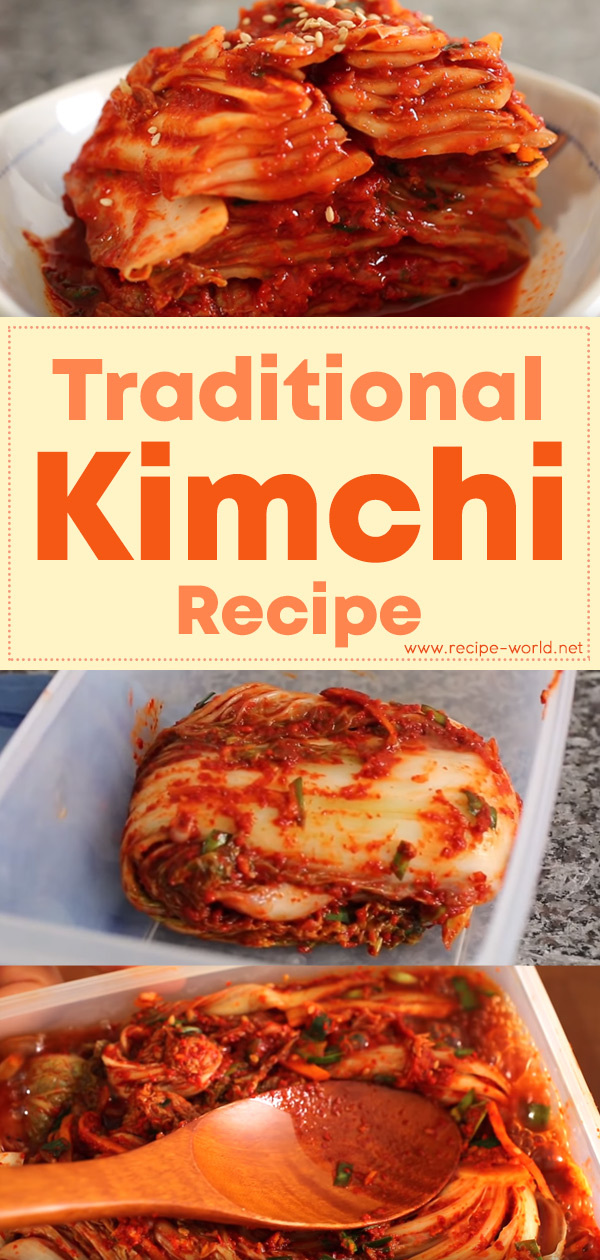Kimchi is popular worldwide. It is a traditional ethnic Korean staple that is made of salted and fermented vegetables. The commonly used ingredients are cabbage and radish with a variety of seasonings including chili, scallions, garlic, ginger, and fermented salted seafood. It is widely eaten as a side dish but kimchi is also used as an ingredient in a wide variety of Korean dishes. Although the most globally recognized kimchi is made from cabbage, there are actually more than 200 variations of this fermented dish and countless ways to enjoy it. Today we are demonstrating how to make the traditional kimchi. You can eat this freshly made or fermented. It can be a perfect side dish to your grilled or fried meats or seafood or, used to make your kimchi fried rice or, added to your soup to give it a kick of spice and a depth of flavor.
Ingredients:
• 6 lb Napa cabbage
• ½ cup of kosher salt
• 2 cups of radish, cut into thin strips
• 1 cup of carrot, cut into thin strips
• 7 to 8 scallions, chopped
• 1 cup of chives, chopped
• 1 cup water dropwort (minori), chopped (optional)
Porridge:
• 2 cups of water
• 2 tbsp glutinous rice flour
• 2 tbsp brown sugar
Kimchi Paste:
• 24 cloves of garlic, minced or pureed
• 2 tsp ginger, minced
• 1 medium onion, minced
• ½ cup fish sauce
• ¼ cup of fermented salted shrimp (saeujeot), chopped
• 2 cups of hot pepper flakes (gochugaru)
Instructions:
This recipe takes about 30 minutes to make. The salting process takes about 2 hours. Kimchi needs to ferment for at least a day. Makes about 8 lb of Kimchi.
To prepare the Napa cabbage for salting, slice off the tough part of the core.
Carefully split the cabbage in half, lengthwise.
Cut a small slit through the center of the core of each cabbage. This way the leaves are loose but still attached to the core.
Wash the cabbage thoroughly and place them in a basin.
Sprinkle salt on each leaf. Lift every layer as you go along but be careful not to tear off the leaves from the core.
Set the cabbage aside for 2 hours but turn the cabbage over every 30 minutes to ensure even salting. You will notice more water at the bottom of the basin every time you turn the cabbage.
After 2 hours, split the cabbage halves into 2 and wash them several times under cold running water to remove any salt particles or dirt.
Put the cabbage in a strainer to drain excess water.
To make the porridge or rice paste, continuously stir water, glutinous rice flour, and sugar in a pot over medium heat for 9 minutes.
Let this cool completely.
To make the kimchi paste, put porridge in a large mixing bowl. Add garlic, ginger, onion, fish sauce, fermented salted shrimp, and hot pepper flakes. Mix well with the wooden spoon.
Add the radish, carrots, scallions, chives, and water dropwort. Mix well.
Take your cabbage and rub kimchi paste on each cabbage leaf.
Fold or roll the cabbage into a packet and put them in a leak-proof plastic container or jar. Make sure you press to pack the kimchi well before putting the lid on.
You may eat kimchi right away or let it sit for a few days to ferment.
Ideas And Tips:
• The kimchi will start fermenting in a day or two at room temperature. Warmer temperatures hasten fermentation. Fermentation starts when the kimchi smells and tastes sour. It is recommended that you store kimchi in the refrigerator after a day or two to slow down the fermentation process. It is also recommended that you press the kimchi down with a spoon to release the bubbles at the bottom of the container and to make sure that the cabbage stays submerged in the liquid.
• If you can’t find water dropwort or minori in your area, you may skip this ingredient, but definitely not the scallions.

images – https://www.youtube.com/watch?v=eTucCw1w6Ak
😳 What Tinnitus Does To Your Brain Cells (And How To Stop It)
After 47 years of studies and countless brain scans done on more than 2,400 tinnitus patients, scientists at the MIT Institute found that in a shocking 96% of cases, tinnitus was actually shrinking their brain cells.
As it turns out, tinnitus and brain health are strongly linked.
Even more interesting: The reason why top army officials are not deaf after decades of hearing machine guns, bombs going off and helicopter noises…
Is because they are using something called "the wire method", a simple protocol inspired by a classified surgery on deaf people from the 1950s...



What if I don’t have sauejeot?